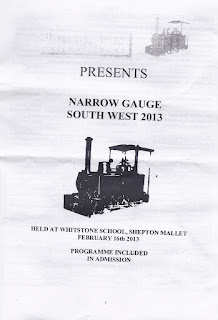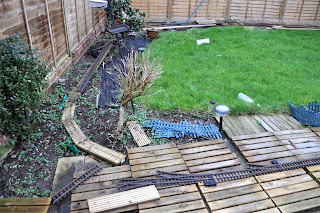I had one of those moments this morning but I think I'm still safely in the land of the non rivet counter.
Last year I got my first (and so far only) double motor locomotive - the Austrian 2095. This is a nice, red, diesel that will happily push the snowplow around the garden (although yet to try with actual snow, but it had enough oomph to cope with the brick in the cart). I like it because of its compactness (length is only 460mm) and lack of protruding parts, nooks and crannies were it to face actual snow....
After some research this morning I established that mine has the generic LGB European Diesel sound card.
It has the running number 205.06. There were 15 of these locos made for Austrian narrow gauge lines.
LGB have made the locomotive with a number of running numbers. So today, we have on eBay another 2095, already fitted with a Massoth digital sound card but in the red/cream earlier livery of Austrian railways and the "eagle" motif at the front.
And with an hour left there are still no bids on it. The starting price is reasonable and realistic - at £300, then a Massoth chip is £175-£200 ish new, meaning only £100+ for the loco. Double heading would mean 4 motors vs the evil snow and immense pulling power. However, it shares the same running number - 2095.06- which means is replicates the same real life loco in an earlier livery.
Do I need it desperately? No!
Would I like it? Yes!
Finally, with a few minutes to go, someone puts a bid in on it.
Ultimately I decide not to bid because of the running number issue and because I could also use £300 towards the Dollnitz Diesel fund. Put the two side by side and once aware of it, then my eye, and I think those of a number of my friends would be drawn to spot the similarity. And I know that there are other running numbers out there and which will presumably crop up at some time in the future.
Still in the land of the non rivet counters...


































